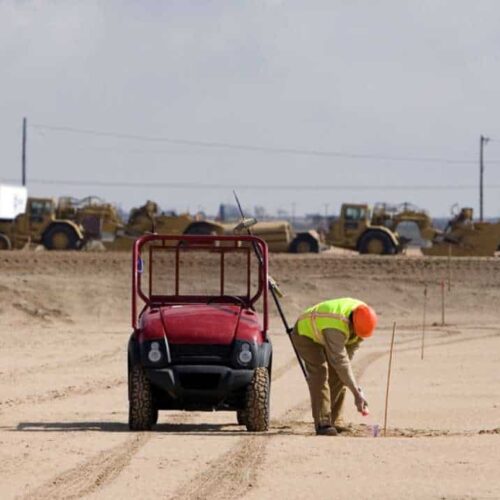Introduction
A new industrial plant producing a key nuclear weapons ingredient, enriched uranium, opened in China last year, near the Sichuan city of Hanzhong. Other such plants opened last year in France and Japan. Argentina is trying to get one started, the Dutch are expanding theirs, and the United States has recently approved construction of such a plant in Idaho and the expansion of another in New Mexico.
The production of highly-enriched uranium is expanding in some countries, in short, even though arms control experts and government officials frequently depict stocks of the material as a troublesome invitation to nuclear weapons proliferation.
Officials in Washington and other capitals, for example, are raising alarms about Iran’s pledge to operate a new such plant at the town of Fordo, in a tunnel south of Tehran, even though the facility will be subject to international inspection. Iran has said it will produce uranium at a higher level of enrichment at the Fordo plant than at its existing enrichment plant. Its announcement has raised concerns that the uranium could be enriched again later and used in nuclear weapons.
On Wednesday, a scientist involved in Iran’s centrifuge program was killed by a bomb that had been attached to his car by a motorcyclist, according to news reports from Iran. Although the exact motive is unknown, he was at least the fourth such Iranian scientist to be killed in the past two years, a mark of the controversy surrounding nuclear efforts that Iran claims are peaceful but many others consider suspicious.
Most of the countries with active enrichment programs have said they support starting negotiations on a global treaty that would halt the production of enriched uranium and an alternative ingredient, plutonium, for use in nuclear weapons. They also have claimed the plants they are building or expanding are producing fissile materials only for use in civilian applications.
But the materials themselves can be shifted from one of these purposes to the other, either by national government or by terrorists — and according to a report released Wednesday, many of the nations involved in adding to their stockpiles are not working hard enough to safeguard the materials from such a diversion.
The new report comes from the Nuclear Threat Initiative, a nonprofit group founded by former TV magnate Ted Turner and former Georgia Sen. Sam Nunn (D) that has helped organize efforts to remove weapons-useable materials from vulnerable countries.
The report graded the nuclear security practices of thirty-two countries that have enough fissile material on hand to build a weapon – including those now expanding their stocks. It concluded, in Nunn’s words, that “too much of it is poorly secured” and that every country should put more effort into locking it away.
One problem is that no international standards exist about precisely how to best protect such materials from theft or diversion. “We are,” Nunn said, “in a race between cooperation and [the] catastrophe” that would ensue if such materials fell into the wrong hands.
After grading nations according to their security and control measures, transparency, stability, level of corruption, respect for international norms, and the capability of key institutions, the NTI group ranked North Korea, Pakistan, and Iran at the bottom of the list – meaning they have the poorest nuclear security. Vietnam, India, and China came next, followed by Uzbekistan, Israel, and Russia.
India and Pakistan continue to make fissile materials for their military programs. North Korea has built a new uranium enrichment plant at its Yongbyon site, although its operating status is unclear. The new Chinese plant, one of two started in the past two years, will boost the nation’s overall production capacity by 25 percent. Of the other countries that are expanding their uranium enrichment capabilities, Argentina ranked in the middle of the group of 32, with France ranked at 19, Japan at 23 and the Netherlands at 6.
The U.S. ranking was 13, after being pulled lower by the sheer quantity of the fissile materials it has on hand — an estimated 610 metric tons of weapons-useable, highly-enriched uranium and 92 metric tons of plutonium, according to a separate report Tuesday by the International Panel on Fissile Materials, a nonpartisan technical group run from Princeton University. That’s enough for tens of thousands of weapons.
A U.S.-led program has made some progress in reducing the worldwide diversion risks, by taking all highly-enriched uranium from 15 countries and some from another nine nations. But more than 100 nuclear reactors that use enriched uranium or plutonium as fuel remain in operation around the globe, and new ones have recently been completed by China and Russia, according to the Princeton group.
Nunn and others at NTI noted that less than half of the thirty-two countries have published their nuclear safety regulations. “There ought to be international norms” and an agency like the International Atomic Energy Agency to police them, Nunn said. The IAEA currently watches for deliberate diversions by states from civilian programs, and plays no role in establishing or monitoring physical protections.
The continuing spread of technologies to make enriched uranium and plutonium was among the factors that prodded a board of experts at the Bulletin of Atomic Scientists to declare on Tuesday that its “Doomsday Clock” had pushed one minute closer to midnight. Steven E. Miller, director of Harvard’s International Security Program, noted in an accompanying essay that “civilian nuclear technology is spreading into two regions – the Middle East and Southeast Asia – where it was previously absent.”
This is, he wrote, “a portentous development” because it will “add to worries about the safety and security of nuclear facilities” around the globe.
Read more in National Security
National Security
Loophole in Senate bill may create nuclear risks
Experts say the legislation may inadvertently encourage production of highly-enriched uranium
National Security
Puncturing the hot air balloons on defense spending
A reader’s guide to the debate in 2012


Join the conversation
Show Comments